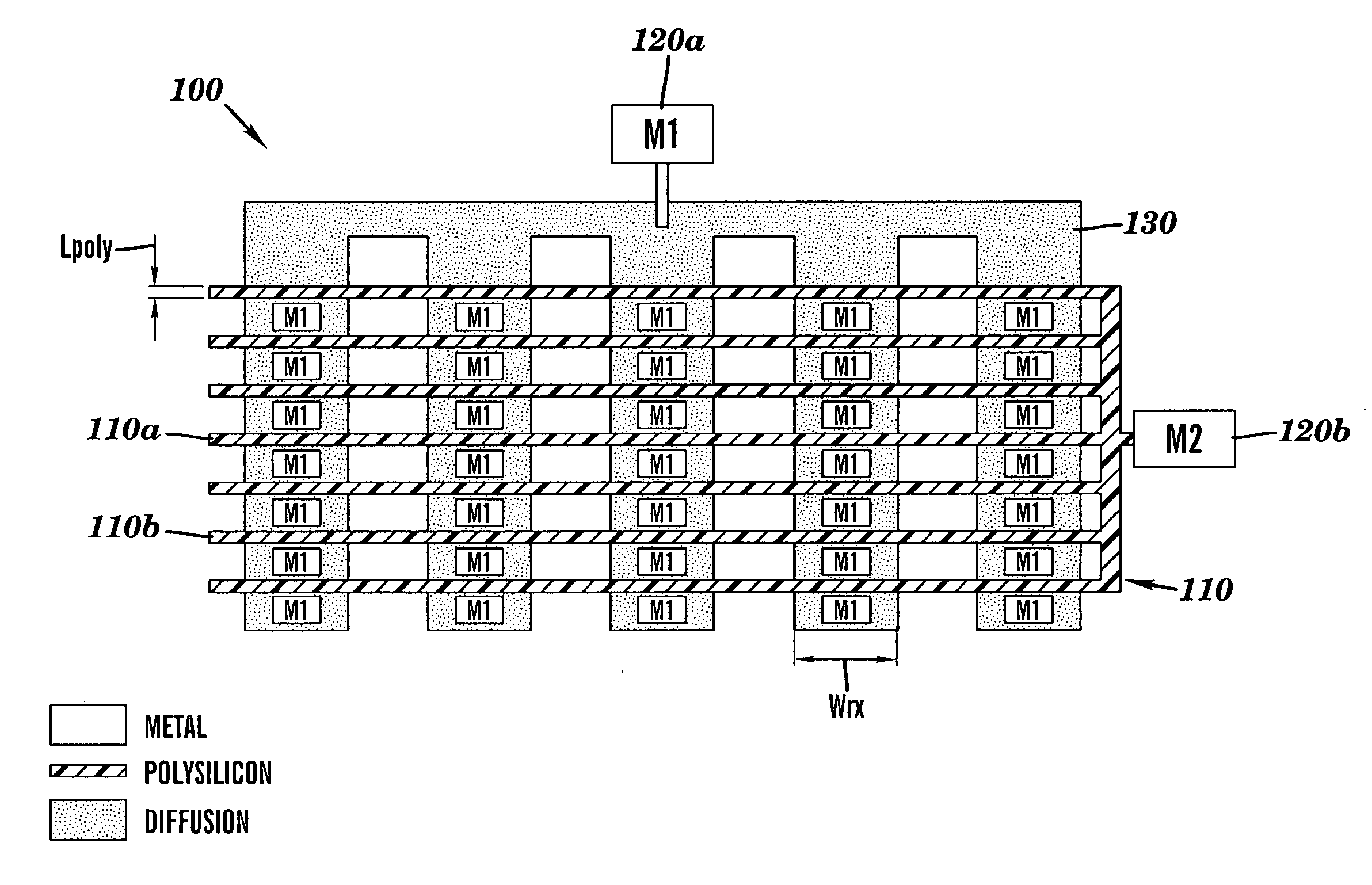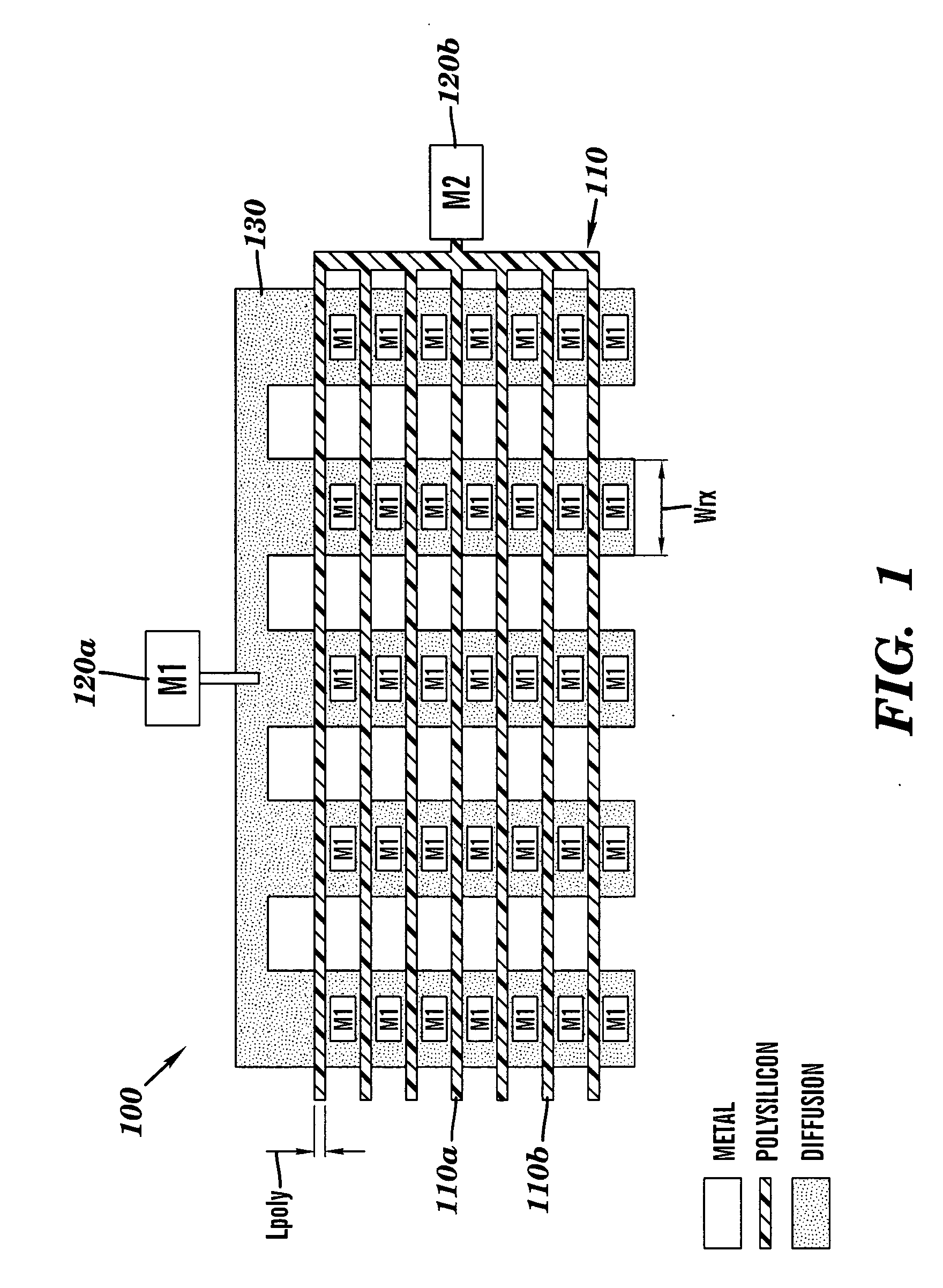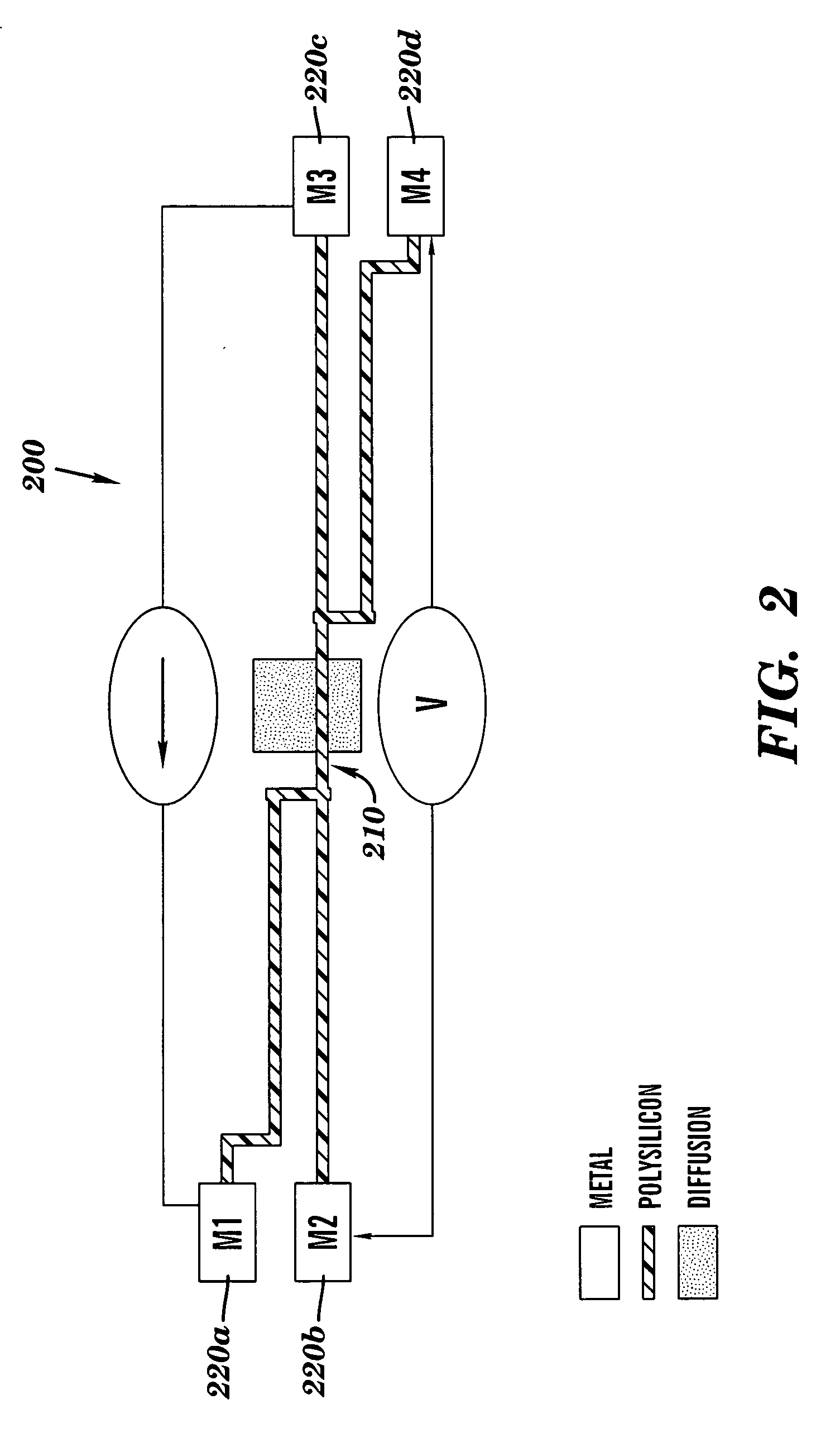Structure for monitoring semiconductor polysilicon gate profile
a polysilicon gate and gate profile technology, applied in the field of polysilicon lines, can solve the problems of affecting the quality of the gate profile, the shape of the rectangular profile may drift, and the destructive technique of visual detection, so as to facilitate the generation of profile drift statistics, facilitate the regular testing of profile drift, and save significant costs
- Summary
- Abstract
- Description
- Claims
- Application Information
AI Technical Summary
Benefits of technology
Problems solved by technology
Method used
Image
Examples
case 2
[0022] Case 2 in FIG. 3 represents an ideal PC profile because the PC profile is rectangular. With an ideal, i.e., rectangular, PC profile, the bottom width of the PC line, L, equals the average width of the cross sectional area of the PC profile, W2. Notice that for case 2, the line that indicates the bottom width of the PC line, L, overlaps the line that indicates the average width of the cross sectional area of the PC profile, W2. PC profile is not always ideal, however, as demonstrated by cases 1 and 3 in FIG. 3. For both cases 1 and 3, the PC profile shape is not rectangular, but instead trapezoidal.
[0023] In case 1, the width of the PC profile is wider at the bottom than at the top of the PC profile. Because the bottom width is wider than the top width, the bottom width will not equal the average width of the cross sectional area. Such is shown in case 1, because the line that indicates the bottom width of the PC profile, L, does not overlap the line that indicates the average...
PUM
 Login to View More
Login to View More Abstract
Description
Claims
Application Information
 Login to View More
Login to View More - R&D
- Intellectual Property
- Life Sciences
- Materials
- Tech Scout
- Unparalleled Data Quality
- Higher Quality Content
- 60% Fewer Hallucinations
Browse by: Latest US Patents, China's latest patents, Technical Efficacy Thesaurus, Application Domain, Technology Topic, Popular Technical Reports.
© 2025 PatSnap. All rights reserved.Legal|Privacy policy|Modern Slavery Act Transparency Statement|Sitemap|About US| Contact US: help@patsnap.com



